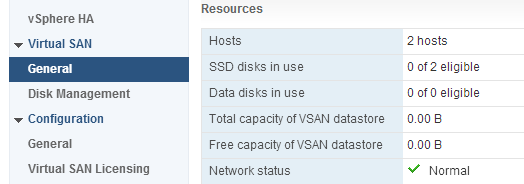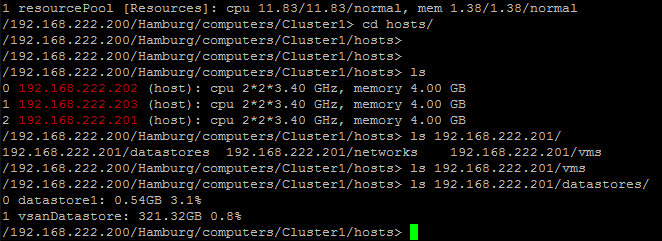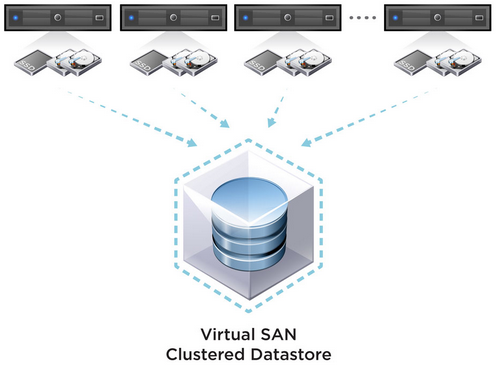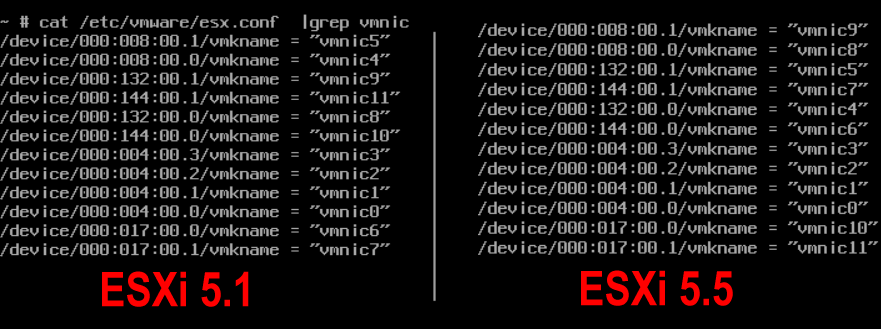Cannot remove datastore * because file system is busy.
The following error message appears when you try to delete or unmount a VMFS datastore:
The resource Datastore Name: * VMFS uuid: * is in use.
Cannot remove datastore 'Datastore Name: * VMFS uuid: *' because file system is busy. Correct the problem and retry the operation.
ESXi 5.5 has a new feature to store coredumps in a file residing on a datastore. It may sometimes create this file automatically and thus blocking datastores from being deleted. It also creates a vsantraces directory which blocks a datastore.
Read More »Cannot remove datastore * because file system is busy.
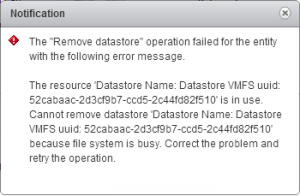
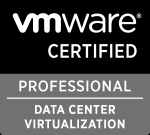
 This problem can be solved by updating RVC to the latest version.
This problem can be solved by updating RVC to the latest version.